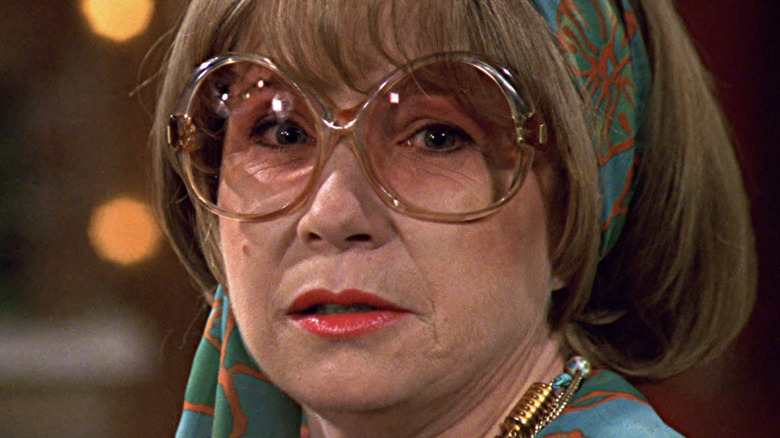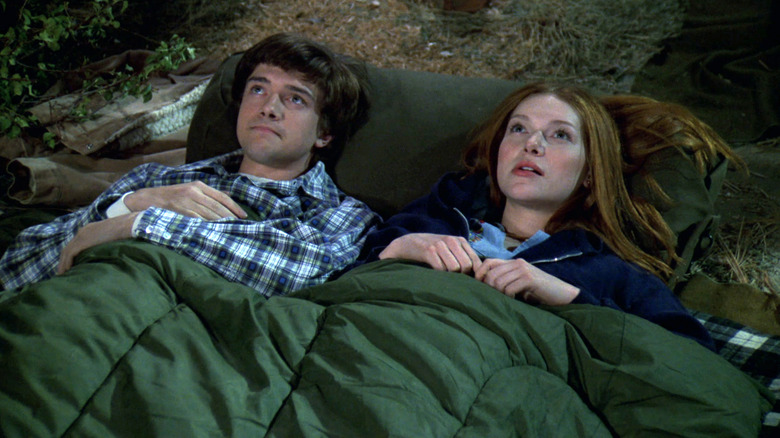The Unexpected Way That '70s Show Differs When Airing At Night
From 1998 until 2006, Fox's "That '70s Show" took a comedic look at teenage American culture of the 1970s. Spanning the years 1976 to 1979, viewers who came of age in the era could appreciate the nuggets of popular culture from the decade, while younger audiences simply enjoyed the '70s nostalgia on display. The characters were funny and irreverent, and there were even some romances that fans simply could never understand. But that was always part of the appeal of the show as a comedy since it excelled at capturing the nostalgic aspirations of the time.
Despite the allure of '80s nostalgia, Fox's short-lived "That '80s Show" never caught on with viewers. But the next decade in the canon could revive the franchise with the premiere of Netflix's "That '90s Show" imminent, which will see most of the former cast return for guest appearances (via Entertainment Weekly). The charm of the show that started it all will always live on for anybody wishing to relive the hijinks of a select group of residents from Point Place, Wisconsin. The style of the series was one of its most memorable attributes, with recurring scenes taking place at specific times depicted in the episodes. For example, the cast would be mingling with their parents during the day and letting loose in the basement at night. One cast member from the show has pointed out the intentions behind this narrative detail.
Topher Grace explained a key difference
Topher Grace (Eric Forman) has provided some thought-provoking insights about how the show is structured. In an interview on "Chicks in the Office," the interviewers were talking about the infamous "circle scenes" in which the camera would swirl around the characters, while in each other's basements. Of course, these scenes were meant to allude to marijuana usage, but there was actually another layer of detail involved.
According to Grace, it was all part of the studio's storytelling technique. "[The studio] had this idea of it's like two shows. So, when it's on at 3, it's all about like Eric upstairs with his parents." An "upstairs" example is perfectly captured at the moment when Red's mother dies in Season 1, Episode 23 ("Grandma's Dead"), which is poignant and powerful. However, there was also another side to the series, one that the studio thought would play better in late-night airings.
"When it's on at 11 at night, it's like downstairs rock and roll," Grace continued. "They can be both because [Eric] was really smart." For example, the same episode where Red's mother dies later takes a more rebellious turn when Eric, Kelso, Hyde, and Fez pretend to be soldiers to gain entry to a bar (via IMDb). The contrast matches what Grace alludes to here about the simultaneous seriousness and playfulness of the series.
Looking back on "That '70s Show," it makes perfect sense when you think about the structure of each episode's scenes. Another prime example is the pilot episode when Eric is called up from the basement high on reefer and is forced to hold a conversation with his parents (per Variety). This represents daytime responsibility (his parents) infringing upon his late-night fun (his friends).

